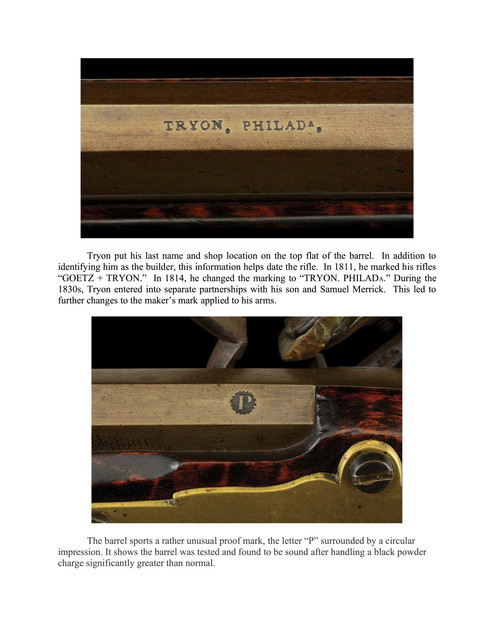...I don't think that there is any standard to a "Hawken" rifle. Like most, I took everything in the late John Baird's books as gospel. We were told that they had browned iron barrels and fittings, thick stocks, and large calibers. Some of that is true. However we now know that there really was no standard. I think they manufactured whatever a buyer ordered or wanted. I looked at some of the original rifles at the Buffalo Bill Center of the West and some clearly have remnants of blued barrels and color-case fittings. I was lucky to handle an original in a private collection and it was .40 caliber. I'm not aware of any original flintlock rifles. The Hawken brothers really liked the percussion system, and also admired the English sporting rifles that were beginning to appear.
They may have been influenced by those...My rifle is an 1840 style LH .54 caliber percussion, made by Brant Selb of Bend, Oregon. Pretty sure Jake & Sam didn't make left hand guns, but who really knows? They are not talking anymore. If every mountain man, trapper, and adventurer heading West had a Hawken, why do so few survive?
I agree that there was no standard regards to Hawken rifles in the modern sense of a standard. I tried to make a point in my first post in this thread that Jake and Sam were in business for over 30 years and that it is natural that their rifles changed over that time. In addition, all their rifles were individually made, so no two are exactly alike. They did follow a pattern, though, and they do have recognizable characteristics.
It's not fair to be too critical of John Baird's books. Baird was the first to publish a serious study of Hawken rifles. In that sense he was a pioneer in the field. All previous writers' work tended to be fluff pieces that repeated myths about Hawken rifles. Even though Baird's first book was published in 1968, he wrote the material years earlier and first published it as a series of articles in Muzzle Blasts starting in February, 1967. Baird admitted that a lot of what he wrote was speculation and subject to change as new information and guns came to light, and he welcomed that. But he got a lot right, too. There is a tendency in our culture to be critical of things and just point out what is wrong without acknowledging what is right.
As far as brown versus blue and color case hardening, we just have a handful of Hawken rifles that still exhibit much of their original finishes. We can draw some conclusions from them, but statistically, the sampling is too small to say they represent the total population of rifles the Hawken brothers made.
Case hardening is the exception. Up to about 1870, all locks were made from soft iron. They all were case hardened to be wear resistant. Prior to the middle of the 19th century color in the case hardening wasn't important to gunmakers and their customers and the locks were typically polished bright after case hardening or left a dark gray blue. Eventually, tastes changed to where some color, blues and greys, were desirable and we see this on the Hawken rifles that still have some original finish. But most of these are late rifles made in the 1850's. Early J&S Hawken rifles from the first half of the 1830's may have had the color polished off the locks. We don't really know.
Blue versus brown on the barrel is also not really determined. Again, a handful of rifles clearly have blued barrels, but the number are statistically insignificant. It doesn't mean all Hawken barrels were blued. Surviving records of rifles ordered by the fur companies show that most barrels on trade rifles were left bright. Brown barrels were the next most frequent finish on trade rifles with blue barrels being the most expensive and less frequently ordered.
People have different tastes and like to have choices, so it would be natural for the Hawken brothers to cater to those varying tastes and offer rifles with bright, brown, and blue barrels just like the fur companies did. Some would say that there is no evidence that they made rifles with any other barrel finish than blue. The problem with that is any of these barrel finishes that are exposed to the elements for over 150 years will develop a rust brown patina naturally. Looking at an antique rifle today that has an rusted brown patina on the barrel doesn't tell us a thing about it original finish. The question remains open as to whether all Hawken barrels were finished with blue barrels.
The owner of this Tryon rifle posted this on another forum. It's a higher quality rifle, but not a presentation grade, and the owner dates it to about 1830. The barrel has a translucent tan or light brownish patina. This rifle is in amazing condition with minimal use and minimal exposure to the elements. The translucent nature of the patina suggests to me that it is the result of aging on an original bright or bare metal finish. It certainly wasn't originally a blued finish or a rust brown finish. (You should be able to click on the image and it will open up on the hosting site where you can enlarge it and look closely at the details.)

By the way, your Brant Selb Hawken looks really nice.


